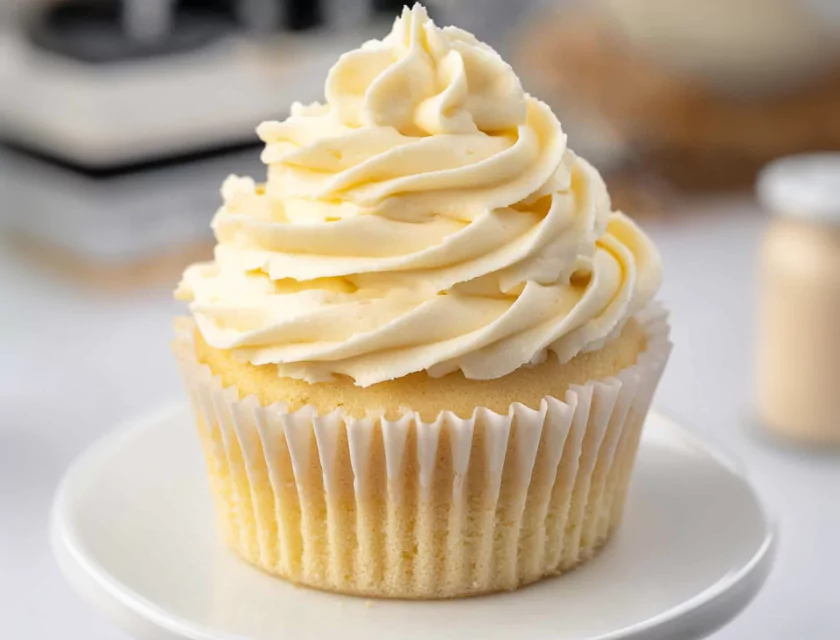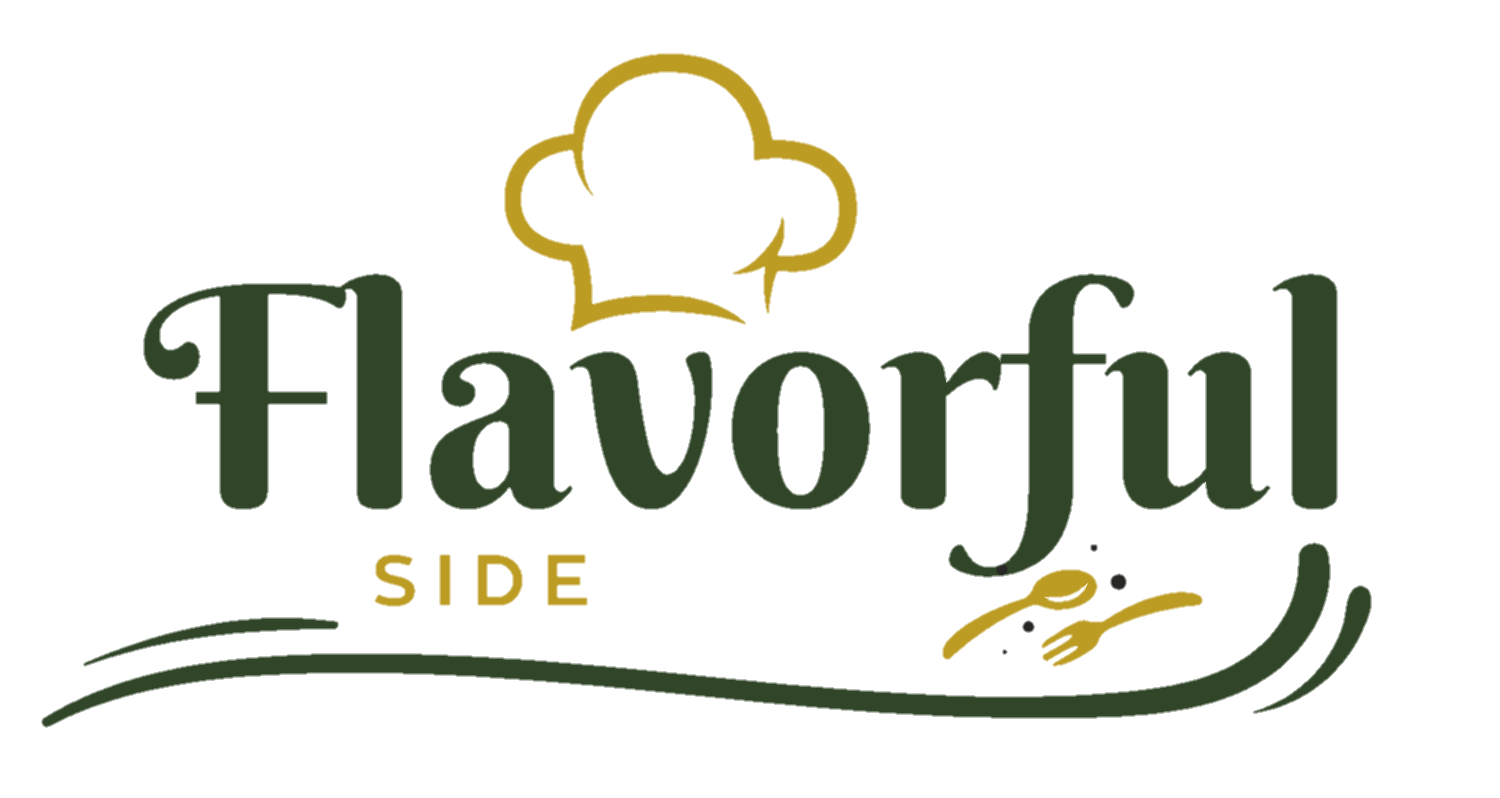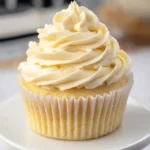Russian Buttercream is a simple yet decadent frosting made with just a few ingredients. Unlike other buttercream varieties that can require egg whites or cooking sugar syrups, Russian Buttercream relies on unsalted butter and sweetened condensed milk for its rich flavor and velvety texture. Its creamy consistency makes it perfect for frosting cakes, cupcakes, cookies, and more.

What sets Russian Buttercream apart is its balance of sweetness. The use of sweetened condensed milk creates a smooth, luscious frosting that’s less sweet than American Buttercream but easier to prepare than Swiss or Italian varieties. Whether you’re a seasoned baker or a beginner, this recipe offers foolproof results with minimal effort.
History and Cultural Significance of Russian Buttercream
While the exact origins of Russian Buttercream are unclear, it draws inspiration from the use of sweetened condensed milk in Eastern European and Russian desserts. Sweetened condensed milk has long been a staple in these regions, favored for its long shelf life and versatility. It’s often used in cakes, cookies, and confections like ptichye moloko (bird’s milk cake) and Napoleon cake. Russian Buttercream embodies the simplicity and richness characteristic of these cuisines, making it a favorite among home bakers worldwide.
This frosting has gained popularity beyond its origins thanks to its ease of preparation and luxurious taste. Today, it’s a go-to choice for those looking for an alternative to overly sweet frostings, offering a refined yet approachable option for a variety of desserts.
Ingredients for Russian Buttercream
The beauty of Russian Buttercream lies in its simplicity, with just four main ingredients that create a rich and creamy frosting. Here’s what you’ll need:
- Unsalted Butter (1 cup or 2 sticks, room temperature): This is the base of the frosting, providing structure and creaminess. Using room-temperature butter is essential for achieving the right texture.
- Sweetened Condensed Milk (1 can, 14 oz): This thick, sweet milk is the key ingredient, adding both sweetness and a silky consistency.
- Vanilla Extract or Vanilla Bean Paste (1 tsp): A touch of vanilla enhances the flavor and adds depth.
- Salt (¼ tsp): Just a pinch balances the sweetness and enhances the overall flavor profile.
- Optional – Powdered Sugar: If the frosting turns out too soft, powdered sugar can be added to stabilize it and adjust the sweetness.
Essential Tools and Equipment
To make Russian Buttercream successfully, you’ll need a few basic tools:
- Stand Mixer or Hand Mixer: A stand mixer with a whisk attachment is ideal for whipping the butter and incorporating air. A hand mixer works just as well if that’s what you have.
- Rubber Spatula: This is essential for scraping down the sides and bottom of the bowl to ensure even mixing.
- Mixing Bowl: A medium to large mixing bowl will work for this recipe.
- Measuring Cups and Spoons: Precise measurements are crucial for the perfect texture.
- Optional – Piping Bags and Tips: If you plan to decorate cupcakes or cakes with intricate designs, a piping bag and tips will come in handy.
Preparation Phase
Getting everything ready before you begin ensures a smooth process. Here’s how to prepare for making Russian Buttercream:
- Bring Butter to Room Temperature: Take the butter out of the fridge about an hour before you start. It should be soft but not melted.
- Gather Ingredients: Measure out the sweetened condensed milk, vanilla extract, and salt. If you’re using powdered sugar, have it ready as well.
- Set Up Equipment: Attach the whisk attachment to your stand mixer or prepare your hand mixer. Have your mixing bowl and spatula nearby.
Detailed Step-by-Step Instructions
- Whip the Butter:
- Place the room-temperature unsalted butter in the mixing bowl.
- Whip it on medium-high speed for 5–7 minutes until it becomes pale, light, and fluffy. This step is crucial for incorporating air into the butter, which will give the frosting its smooth texture.
- Add Vanilla and Salt:
- Lower the mixer speed and add the vanilla extract or vanilla bean paste, along with the salt.
- Mix until just combined.
- Incorporate the Sweetened Condensed Milk:
- With the mixer on medium speed, slowly pour in the sweetened condensed milk. Add it in four increments, allowing each addition to fully incorporate before adding more.
- Scrape down the sides and bottom of the bowl frequently to ensure everything mixes evenly. Sweetened condensed milk can sometimes pool at the bottom, so be thorough.
- Adjust the Consistency (Optional):
- If your frosting appears too soft or doesn’t hold its shape, add powdered sugar, ½ cup at a time, until the desired thickness is achieved.
- Test the Frosting:
- Check the frosting’s texture by running a spatula through it. It should be creamy and hold peaks. If it’s still too soft, refrigerate it for 10–15 minutes, then whip again briefly before using.
Yield and Serving Suggestions
This recipe makes approximately 3 cups of frosting, which is enough to:
- Frost about 24 cupcakes.
- Cover a 6-inch layer cake, including filling and outer frosting.
- Pipe intricate decorations or ice cookies.
Expert Preparation Tips
- Room-Temperature Butter Is Key: Cold butter won’t whip properly, and melted butter will ruin the texture. If you’re in a hurry, you can cut the butter into small pieces to soften it faster.
- Add Condensed Milk Slowly: Incorporating it too quickly can cause the frosting to break or become runny.
- Scrape Down the Bowl: This ensures no unmixed butter or condensed milk is left at the bottom.
- Refrigerate if Necessary: If your kitchen is warm, the buttercream may become too soft. Refrigerate briefly to firm it up.
Variations and Customizations
- Chocolate Russian Buttercream: Add ½ cup of cocoa powder or 4–6 oz of melted and cooled chocolate to the whipped butter before adding condensed milk.
- Flavored Buttercream: Experiment with extracts like almond, lemon, or peppermint to create unique flavors.
- Coloring the Frosting: Use gel food coloring to achieve vibrant shades without altering the consistency.
Why Choose Russian Buttercream?
Russian Buttercream is a versatile and forgiving frosting that works for almost any dessert. Its simple preparation and balanced sweetness make it ideal for everything from casual baking to special occasions. Whether you’re frosting a layer cake or decorating intricate cupcakes, Russian Buttercream delivers both flavor and beauty.
Side Dish Recommendations
Russian Buttercream is incredibly versatile and pairs beautifully with various desserts and baked goods. Below are some creative ways to use and enhance your buttercream, along with pairing ideas to elevate your desserts.
Cakes
Russian Buttercream is a classic choice for frosting cakes due to its smooth texture and light sweetness. It works well with almost any type of cake, but here are some popular combinations:
- Vanilla Cake: The delicate flavor of vanilla complements the creamy, sweet buttercream perfectly.
- Chocolate Cake: Russian Buttercream balances the richness of chocolate, creating a harmonious flavor profile.
- Red Velvet Cake: Its subtle tanginess pairs well with the buttercream’s creamy sweetness.
- Carrot Cake: Add a touch of cinnamon or nutmeg to the buttercream for an enhanced pairing.
Cupcakes
Cupcakes topped with Russian Buttercream are visually stunning and irresistibly tasty.
- Classic Vanilla or Chocolate Cupcakes: Pipe Russian Buttercream on top for a bakery-quality finish.
- Funfetti Cupcakes: The buttercream adds a creamy contrast to the colorful sprinkles inside the cake.
- Seasonal Cupcakes: Incorporate flavors like pumpkin or gingerbread into your cupcakes and use this frosting for a festive touch.
Cookies
Russian Buttercream isn’t just for cakes; it makes a fantastic topping or filling for cookies.
- Sugar Cookies: Pipe the buttercream on top of sugar cookies for a soft, creamy texture.
- Sandwich Cookies: Use it as a filling between two cookies, like shortbread or chocolate cookies.
- Thumbprint Cookies: Fill the center of thumbprint cookies with buttercream for a unique twist.
Layer Cakes
Layer cakes become even more indulgent with Russian Buttercream. Spread it between cake layers for a creamy, luscious filling. It’s especially good for:
- Naked Cakes: The buttercream adds a rustic, elegant touch when applied thinly on the outside.
- Celebration Cakes: For weddings or birthdays, use the buttercream to create intricate designs or smooth finishes.
Seasonal Treats
Customize your buttercream to suit seasonal treats.
- Christmas Desserts: Add peppermint extract and use the buttercream to frost holiday cupcakes or cookies.
- Summer Desserts: Incorporate citrus zest or fruit purees for light and refreshing flavors.
- Fall Favorites: Pair with spiced cakes, such as pumpkin or apple, for a cozy autumnal dessert.
Dessert Bars
Russian Buttercream pairs well with rich and dense dessert bars.
- Brownies: Use it as a topping for fudgy brownies to create a decadent treat.
- Lemon Bars: Add a dollop of lightly sweetened buttercream to complement the tartness.
- Blondies: Spread it over blondies for an extra layer of sweetness.
Fruit Flavors
Adding fresh fruit or fruit purees to Russian Buttercream creates a burst of flavor that pairs beautifully with fruity desserts.
- Strawberries or Raspberries: Mix fruit puree into the buttercream for a natural, tangy sweetness.
- Citrus Zest: Incorporate orange or lemon zest for a bright and refreshing twist.
- Tropical Flavors: Mango or pineapple flavors enhance summer desserts and tropical cakes.
Pastries
Russian Buttercream can also be used in more delicate pastries.
- Eclairs: Pipe it inside éclairs for a creamy filling or use it as a topping.
- Macarons: Use the buttercream as a filling for perfectly smooth and flavorful macarons.
- Profiteroles: Fill cream puffs with buttercream for a luxurious touch.
Nutritional Information and Health Benefits
Russian Buttercream is indulgent, but it’s worth understanding its nutritional profile and how it compares to other frostings.
Per Serving (1 Tablespoon):
- Calories: Approximately 90 calories
- Total Fat: 8g
- Saturated Fat: 5g
- Sugar: 5g
- Protein: 1g
- Cholesterol: 20mg
- Sodium: 25mg
How It Compares to Other Buttercreams
- Less Sweet than American Buttercream: Russian Buttercream contains less powdered sugar, which makes it lighter and less cloying.
- Fewer Ingredients than Swiss or Italian Buttercream: This recipe is simpler, requiring no cooking or egg whites, making it more accessible for home bakers.
- High in Healthy Fats: While it is rich in butter, which contributes to its fat content, moderate consumption can be part of a balanced diet.
Tips for Health-Conscious Bakers
- Use unsalted butter to control sodium levels.
- Opt for organic or low-sugar condensed milk if available.
- Pair the frosting with lighter or whole-grain baked goods for a slightly healthier dessert.
Common Mistakes to Avoid and Troubleshooting Tips
Even with a simple recipe like Russian Buttercream, there are a few common pitfalls to avoid. Here’s how to troubleshoot them:
Common Mistakes
- Using Cold Butter: Cold butter won’t whip properly and will result in a dense, heavy frosting.
- Adding Sweetened Condensed Milk Too Quickly: This can cause the frosting to break or become runny.
- Overmixing the Frosting: Over-whipping can create a grainy texture or make the frosting too soft.
- Skipping the Scrape-Downs: Failing to scrape down the sides and bottom of the bowl may leave pockets of unmixed butter or condensed milk.
Troubleshooting Tips
- Frosting Is Too Soft:
- Chill the frosting in the refrigerator for 10–15 minutes to firm it up.
- Add powdered sugar, ½ cup at a time, to stabilize the consistency.
- Frosting Is Broken or Separated:
- Add a small amount of softened butter (1–2 tablespoons) and whip it back together.
- Ensure the butter and condensed milk are at similar temperatures before mixing.
- Grainy Texture:
- This can happen if the butter wasn’t whipped long enough. Whip it for another 1–2 minutes to incorporate more air.
How to Perfect Russian Buttercream
Achieving the perfect texture and flavor for Russian Buttercream comes down to technique and patience.
- Always start with room-temperature butter. If it’s too cold, it won’t whip properly, and if it’s too warm, the frosting will be runny.
- Gradually add the sweetened condensed milk to allow it to incorporate smoothly.
- Scrape the bowl frequently to ensure an even texture.



Leave a Comment